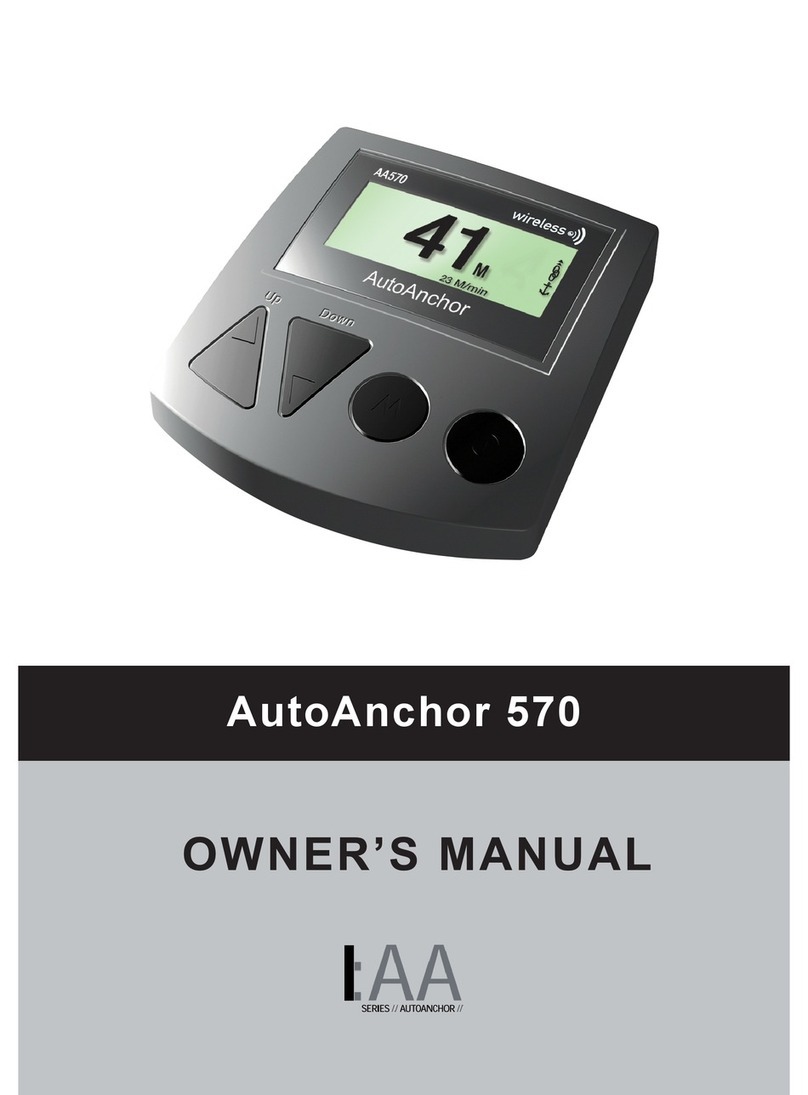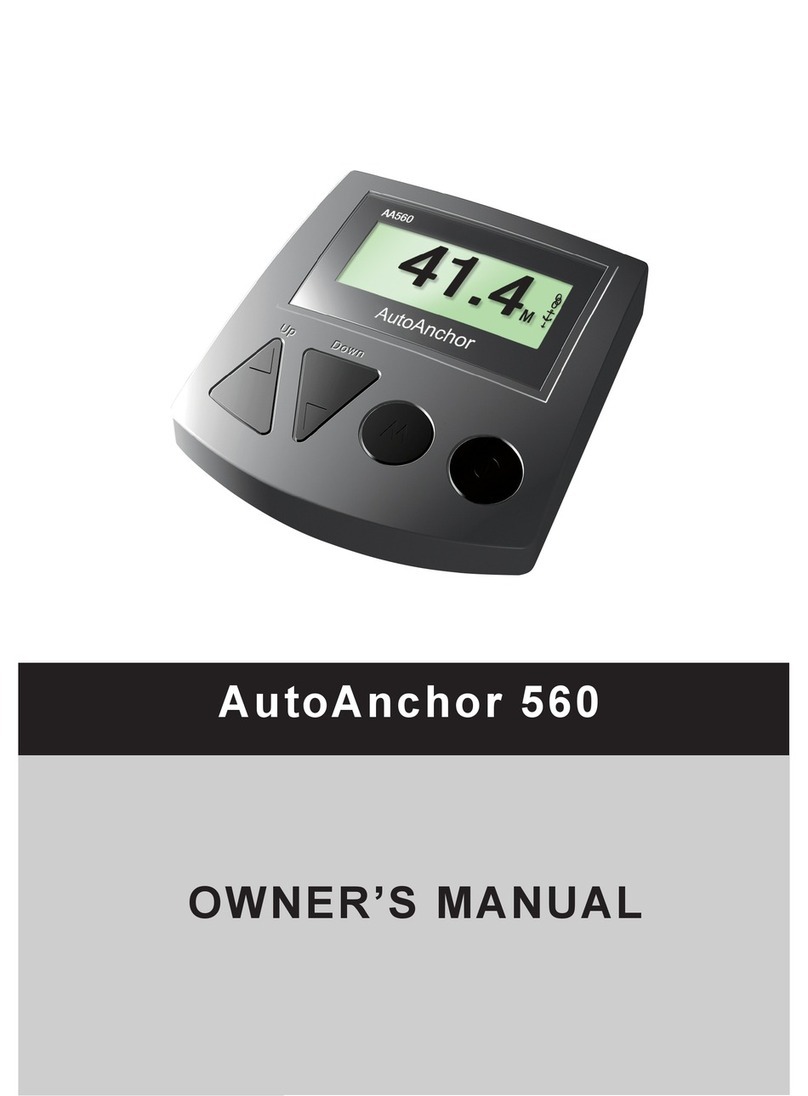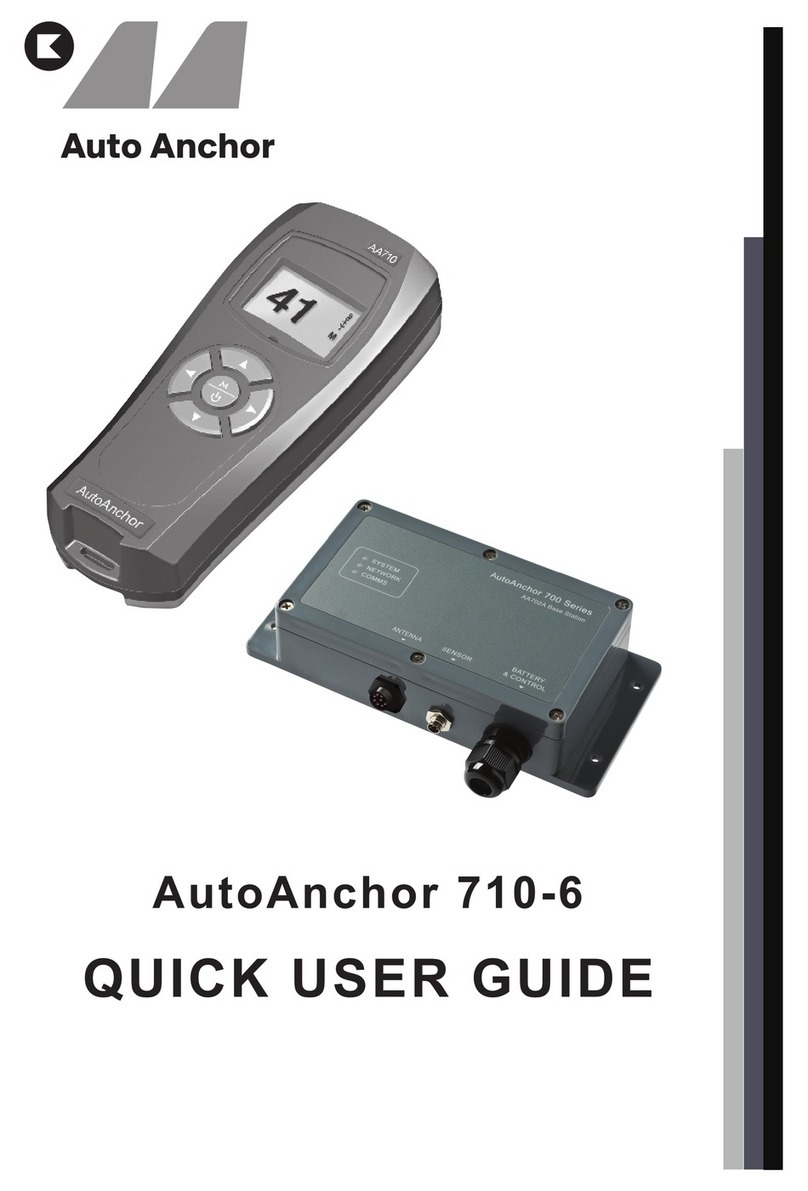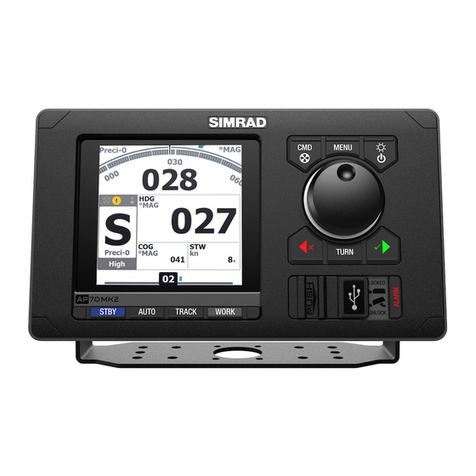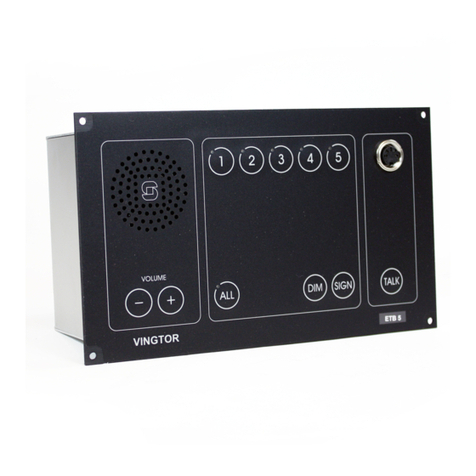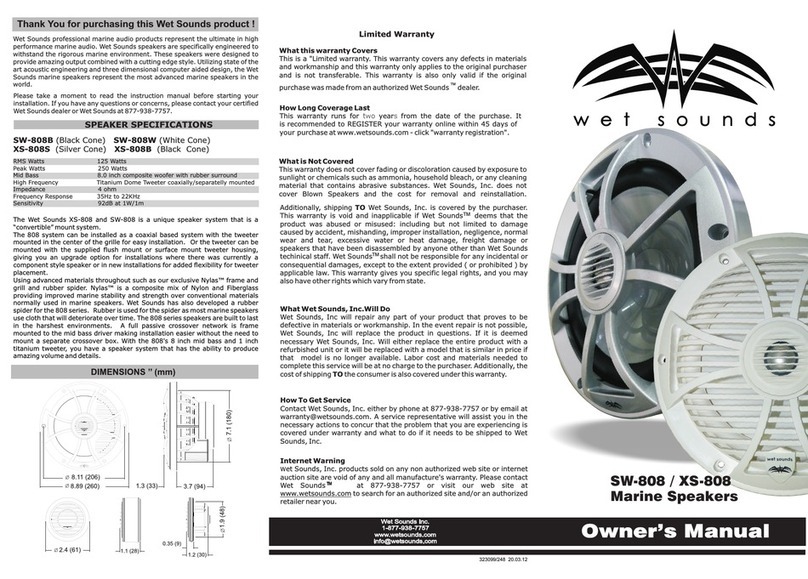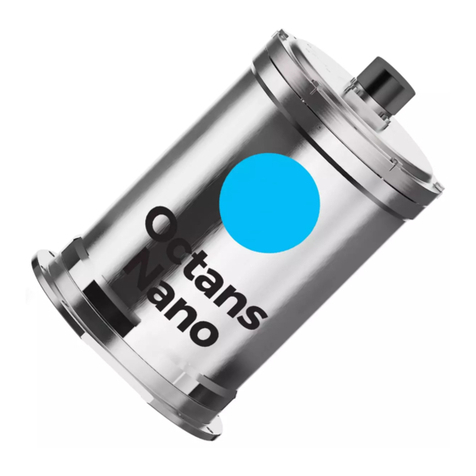Auto Anchor 730 User manual


1
AutoAnchor 730 Owner’s Manual
Part 1 Important Information 2
Part 2 Installation 4
Part 3 Set Up 17
Part 4 Operation 28
Part 5 Maintenance 38
Part 6 Troubleshooting 38
Index 56
TABLE OF CONTENTS
To the best of our knowledge the information in this manual was correct at the time
of printing. However, the AutoAnchor products are continuously being reviewed and
improved and product specications may be changed without notice. The latest product
specications may not be reected in this version of the manual. The documentation
relating to the AutoAnchor products is created in the English language and may be
translated from English to another language. In the event of any conict between
translated documents, the English language version will be the ofcial version.
AutoAnchor documents are available on the website www.autoanchor.co.nz

2
• The AA730 should only be installed by a qualied marine electrician. Do not
attempt to install the AA730 unless you are suitably qualied.
• This manual supports the use of the AA730 only. The appropriate manufacturer’s
instructions must be followed for the installation and use of the equipment the
AA730 is set up to control.
• There must be an alternative method available to operate the windlass, thruster or
other equipment.
• The AA730 can be tted to most vertical windlasses. A horizontal windlass may
require a sensor holder or a custom designed sensor which is not included in the
standard pack. Check with your supplier or the AutoAnchor manufacturer.
• For chain counting the AA730 must be tted to a windlass with a dual direction
control box or solenoid pack.
• Information for installation and operation of the AA730 is supplied, including
pre-set windlass prole lists, wiring diagrams, the Owner’s Manual and
the Quick User Guide. All documents must be left on board for the owner.
• Non compliance with the instructions could impair operation of the AA730, the
windlass, thruster or other equipment and could result in personal injury and/or
damage to the boat.
• Non compliance with the instructions will negate the manufacturer’s warranty.
• The AA730 manufacturer and supplier accept no liability for personal injury or
property damage resulting from failure to follow the installation and operation
instructions or the use of the AA730 in a way that may cause accidents or
damage or that may violate the law.
• All the technical and cable specications must be checked and adhered to and
wiring diagrams must be followed without modication.
• Before use the AA730 must be correctly set up for all the equipment it is to control
and tested in a safe environment. The AA730 will not count correctly if the
windlass selection is wrong or the windlass is not standard (eg it is installed
with a different chainwheel or motor).
• All installations must be carried out in accordance with USCG, ABYC, NMMA and
BMEA requirements.
• When this product reaches the end of its useful life it must be disposed of in
accordance with local regulations.
• Information is also available on www.autoanchor.co.nz
PART 1 IMPORTANT INFORMATION
READ BEFORE INSTALLING OR USING THE AUTOANCHOR

3
TECHNICAL SPECIFICATIONS
Parameter AA730 Remote Console AA703 Base Station
Current Consumption 100mA 50mA
Power Supply 12V/24V DC
Maximum Voltage 30V DC
Output Maximum
Current Draw
12V DC: 3.5A
24V DC: 3.5A
The system has internal current limiting and thermal shutdown.
Output Minimum
Current Draw
12V DC: 10mA
24V DC: 20mA
IP Rating IP67
Operating Temperature
Range
23oF to 140oF (-5oC to 60oC)
Outputs 6
System Supports 1 base station and 1 console.
Rode - Chain Only Stainless or galvanised steel.
Rode - Rope and Chain Must have a minimum of 10ft (3m) of chain. Chain must be
galvanised steel. Rope should be a good quality, nylon anchor
rope. Type 66 or equivalent.
DC windlasses require a dual direction solenoid.
ELECTROMAGNETIC COMPATIBILITY (EMC)
FCC Information:
This device complies with CFR47 Part 15 of FCC Rules for Class B equipment.
ESTI Information (CE):
This device meets the relevant standards set out in European Standard EN 60945:2002 for
maritime navigation and radio communication equipment and systems. These standards
are intended to provide reasonable protection against interference by other emission
generating products on the boat. Compliance with these standards is no guarantee that
interference will not occur in a particular installation. The installation instructions must be
followed to minimise the potential for interference.
Note: If shielded cable is not used for the sensor connections this will compromise the
EMC and may invalidate the warranty.
AA730 equipment (AA703 base station and AA730 remote console) must be installed at
least 3ft (1m) away from any equipment transmitting or cables carrying radio signals eg
VHF radios, modied sine wave inverters, cables and antennas or radar antennas; and at
least 6ft (2m) away from any SSB equipment. AA703 cables must be installed at least
1.5ft (500mm) away from such items.

4
PART 2 INSTALLATION
Drilling the Deck: Before drilling into the deck, ensure there is nothing below the deck
that could be damaged and that any hole you drill will not weaken the boat’s structure. Drill
a hole 10.3mm (13/32”) diameter through the deck. Ensure this hole is directly in line with
the sensor hole in the deckplate.
2.1 INSTALLATION TO OPERATE A WINDLASS
2.1.3 SENSOR INSTALLATION OVERVIEW
Vertical Windlasses: The sensor is tted in the deckplate. Some deckplates are predrilled
for the sensor. Others have a dimple or mark to show where the sensor should be tted.
If the windlass is not factory drilled, drill a hole 10.3mm (13/32”) diameter through the
windlass deckplate. See the instructions for your specic windlass type.
HorizontalWindlasses:Sometimesitisnotpossibletotthesensortoahorizontal
windlassoritmayneedtobettedbythewindlassmanufacturer.Beforestarting
checkwiththeAutoAnchormanufacturerorsupplierthatitispossibletotthe
sensortoyourwindlass.Youmayneedaspecialtting.
2.1.2 MAGNET INSTALLATION OVERVIEW
Check before starting. Your chainwheel may be pretted with a magnet or predrilled
ready for you to t the magnet.
Magnet Polarity: Not relevant when using the grey AA sensor (#9067) or a reed switch
sensor. If retrotting, using the black AA sensor (#9008), the south pole (marked side) of
the magnet must face the sensor.
Magnet Seal: Insert the magnet into the hole and cover it with a minimum of 1mm of epoxy
to protect it against corrosion. See Fig 1 on page 7.
Magnet Size and Position: Refer to the instructions for your specic windlass type.
2.1.1 MAGNET AND SENSOR INSTALLATION
PLEASE READ BEFORE COMMENCING INSTALLATION
Correct magnet and sensor installation is critical for successful AutoAnchor
operation.
The AutoAnchor can be installed on vertical windlasses, drum winches and most
horizontal windlasses. Installation differs depending on the windlass type and on the
rode (all-chain or rope and chain). Please follow the instructions for your windlass
and rode. If it is not possible to comply with these instructions please check with the
AutoAnchor manufacturer or your supplier for other options or if you are not sure how to
proceed.
See www.autoanchor.co.nz for contact information.

5
Part #9507 Male Field Connector
Part #9508 Female Field Connector
If there is no plug on the sensor cable attach the AA eld
connector to the wires and use the connecting cable as above.
2.1.4 PLUG AND PLAY SENSOR CABLE
The AutoAnchor plug and play sensor cable is 2 core, tinned shielded cable. It must be
used to connect the sensor to the console unit. Ensure the connectors are rmly screwed
together.
The warranty does not apply if the sensor cable plugs are removed.
The sensor cable is tted with a female plug to connect direct to the male connector on the
AA703 base station. If a longer length is required, sensor connecting cable, with a male
plug at each end, is available in the following lengths:
6.5m (21.33ft) Part #9500
10m (32.81ft) Part #9501
15m (49.21ft) Part #9502
20m (66.62ft) Part #9503
25m (82ft) Part #9504
35m (114.83ft) Part #9514
A 2m male/female cable (Part #9505) plus a gender changer (Part #9510) will be required
to connect the extension cable to the base station.
Field Connectors
Sensor Connection: The sensor is plugged direct into the AA703 base station. Do not
leave the cable hanging loose, it must be tied in place with cable ties. Extension cable,
gender changers and eld connectors are available if required.
Sensor Plug
Fitting the Sensor: Do not force the sensor into the hole. Hammering the sensor head
can damage the internal electronics. Ensure the sensor head is positioned so that it will not
be hit by the chainwheel or manual crank mechanism during windlass operation and that it
is at least 300mm (1ft) away from the battery and motor cables. Secure the sensor using a
good quality neutral cure silicone or a strong adhesive eg. Sikaex 291 or 3M 5200.
Connecting 2 cables together:
If you need to extend the cable length - 2 cables can be joined
together using Part #9510 Gender Changer.
Console Plug

6
Dual Installation with Other AA Products
Use the T adaptor Part #9506 and the 2m Male/Female extension cable
Part #9505.
2.1.5 REED SWITCH SENSORS
Some windlasses are supplied pre-tted with a reed switch sensor. Reed switch sensors
must have a 10mm x 8mm magnet (#9061) and the gap between the reed switch sensor
and the magnet must be a minimum of 3mm and a maximum of 5mm. This sensor requires
a eld connector.
The AutoAnchor will operate with a reed switch sensor for all-chain rode. If using
combination rope and chain rode the reed switch sensor provides a reasonably accurate
count of rode deployed but on retrieval the display may be incorrect because it cannot
allow for the stretch in the rope.
For an accurate rope and chain count, the reed switch sensor should be replaced with the
AA grey sensor (#9067).
2.1.6 SENSOR TUNING
When the AutoAnchor is completely installed the sensor must be tuned. See the
instructions on page 30.
Sensor
SYSTEM
NETWORK
COMMS
SENSOR
BATTERY
& CONTROL
AutoAnchor 703
Base Station
AutoAnchor
560
Console
Up Down
AA703 Base Station
# 9506
# 9505
Sensor Extension Cable

7
Magnet Fit: Drill a hole 10.3mm (13/32”) diameter and 9.5mm (3/8”) deep to t the magnet
in the underside of a spoke in the bottom of the chainwheel. Cover the magnet with a
minimum of 1mm epoxy. The magnet should be aligned with the sensor. See Fig 1.
2.1.7 INSTALLATION ON A VERTICAL WINDLASS - CHAIN ONLY
Magnet Size: Standard size is 10mm x 8mmm (#9061). This may be replaced with the
smaller 6mm x 4mm (#9009) magnet if required for your windlass.
Fig 1 - All sensors
Seal with minimum 1mm epoxy.
Magnet
Sensor
Gap Between the Sensor and Magnet:
Sensor Magnet Size Gap
AA Grey Sensor #9067 6mm x 4mm Minimum 3mm - Maximum 30mm
AA Grey Sensor #9067 10mm x 8mm Minimum 3mm - Maximum 50mm
AA Black Sensor #9008 All Magnets Minimum 3mm - Maximum 8mm
Reed Switch Sensor 10mm x 8mm Minimum 3mm - Maximum 5mm
Chainwheel
Deckplate
Refer to the Overview Notes on page 4 before starting installation.
Sensor Connection: Ideally the sensor should be plugged directly into the AA703 base
station. If longer cable is required use the AA 2m male/female extension cable (Part
#9505) or one of the AA standard male/male extension cables plus the 2m cable and a
gender changer. Ensure the connectors are rmly screwed together. See the information
on page 5.
Loose cable should be tied in place with cable ties and kept clear of chain.
Sensor Position: The AA black sensor and the reed switch sensor must be tted directly
in line with the magnet in the chainwheel. See Fig 1 above. The AA grey sensor may be
tted up to 20mm out of alignment. The gap between the sensor and magnet must be as
per the table below.
Note: If it is not possible to
align the sensor and magnet
exactly the AA grey sensor may
be tted up to 20mm out of
alignment. The AA black sensor
and the reed switch sensor must
be directly aligned.

8
90oBow
Stern
Rode
Anchor
Locker
Chainwheel
Magnet Fit: Some windlasses are predrilled and others need a special t. Please check
with your supplier. The usual t is as follows: Drill a hole 10.3mm (13/32”) diameter and
9.5mm (3/8”) deep into a spoke in the top of the chainwheel. Cover the magnet with a
minimum of 1mm epoxy. The magnet and sensor must be aligned so that the anchor rode
passes between them. See Figs 2 & 3.
Sensor
Magnet
Fig 2 Fig 4
Seal with minimum 1mm epoxy.
Magnet
2.1.8 INSTALLATION ON A VERTICAL WINDLASS - ROPE & CHAIN
For an accurate rope and chain count, the rode must run between the sensor and
magnet. If your windlass is pretted with a magnet in the bottom of the chainwheel you
need to remove it and t a new magnet in the top of the chainwheel. Refer to Figs 2-4.
Magnet Size: 10mm X 8mm magnet (#9061). An 8mm x 6mm magnet (#9052) may be
used on smaller windlasses. Check with your supplier.
Sensor Position: The sensor must be tted into the deckplate within the sensor position
range at the stern end of the windlass (See Fig 5). It must also be aligned with the magnet
so that the rode passes between the sensor and the magnet. The centre of the magnet
and the centre of the sensor may be up to 10mm out of direct alignment (See Fig 3). The
gap between the sensor and magnet must be as per the table below.
Chainwheel
Deckplate
Fig 3
Sensor & Magnet may be up to
10mm out of direct alignment
10mm
Sensor
Magnet
Sensor
Magnet
Fig 5
Sensor Position Rope & Chain Vertical Windlasses
Gap Between the Sensor and Magnet
Sensor Magnet Size Gap
AA Grey Sensor #9067 8mm x 6mm Minimum 30mm - Maximum 44mm
AA Grey Sensor #9067 10mm x 8mm Minimum 35mm - Maximum 50mm
Refer to the Overview Notes on page 4 before starting installation.
Sensor Connection: If longer cable is
required the AutoAnchor plug and play
sensor extension cable must be used
to connect the sensor to the AA703
base station. Ensure the connectors
are rmly screwed together. See the
information on page 5.
Loose cable should be tied in place
with cable ties and kept clear of
chain.
Sensor Position
Range

9
2.1.9 INSTALLATION ON A HORIZONTAL WINDLASS - CHAIN ONLY
Fig 6
Magnet in rim of chainwheel and standard
sensor in sensor holder screwed to the deck
Magnet & Sensor Fitting for Chain Only Horizontal Windlasses
Magnet Size: 6mm x 4mm magnet (#9009).
Magnet Fit: If your windlass is not predrilled drill a hole 6.5mm (1/4”) diameter and 5mm
(3/16”) deep in the edge of the chainwheel. Cover the magnet with a minimum of 1mm
epoxy.
Gap Between the Sensor and Magnet:
Sensor Magnet Size Gap
AA Grey Sensor #9067 6mm x 4mm Minimum 3mm - Maximum 30mm
AA Grey Sensor #9067 10mm x 8mm Minimum 3mm - Maximum 50mm
AA Black Sensor #9008 All Magnets Minimum 3mm - Maximum 8mm
Reed Switch Sensor 10mm x 8mm Minimum 3mm - Maximum 5mm
Sensor Connection: If longer cable is required the AutoAnchor plug and play sensor
extension cable must be used to connect the sensor to the AA703 base station. Ensure
the connectors are rmly screwed together. See the information on page 5.
Loose cable should be tied in place with cable ties and kept clear of chain.
Refer to the Overview Notes on page 4 before starting installation. It is not
possible to set out a single installation method for horizontal windlasses.
Thesensormaybettedinsidethewindlassoryoumayneedasensor
holder (Part #9110). See Fig 6 below. Often the sensor and magnet can only
bettedbythewindlassmanufacturer.
Sensor Holder
Sensor
Magnet
Sensor Position: The AutoAnchor sensor may be tted using a sensor holder xed to the
deck to sit under the chainwheel (See Fig 6). The AutoAnchor sensor holder (#9110) is not
included in the standard kit. Check with your supplier if you need this. The AA black sensor
and the reed switch sensor must be tted directly in line with the magnet in the chainwheel.
The AA grey sensor may be tted up to 20mm out of alignment. The gap between the
sensor and magnet must be as per the table below.

10
Before starting check with the AutoAnchor manufacturer, or supplier, that it is
possibletotthesensorandmagnettoyourhorizontalwindlass.
For an accurate rope count the rode must run between the sensor and magnet. On a
horizontal windlass the magnet and sensor must be tted by the windlass manufacturer.
If it is not possible to have the sensor and magnet tted to achieve this you can use the
chain only horizontal windlass installation above. This provides an accurate count of rode
deployed but during retrieval the display may be incorrect because it cannot allow for
the stretch in the rope.
2.1.10 INSTALLATION ON A HORIZONTAL WINDLASS - ROPE & CHAIN
2.1.11 INSTALLATION ON DRUM WINCHES
For Drum Winch Set Up and Operation Refer to Page 27.
Gap Between the Sensor and Magnet:
Minimum 5mm and maximum 40mm.
Themagnetandsensormustbettedsothatthegapremainsconsistentasthe
winch turns.
Magnet Installation:
Size: 10mm x 8mm magnet (#9061).
The magnet can be mounted on the main shaft or on the side of the drum. See Figs 8 and
9. If mounted on the side of the drum, position it close to the inside to reduce the
peripheral speed of the magnet. Fix the magnet into position with epoxy ensuring it is
completely sealed to prevent corrosion.
Sensor Installation
The Grey 3 wire AA sensor (#9067) is recommended but a proximity sensor may be used.
Every installation is different so this manual can provide guidelines only. The AA sensor
holder #9110, or a customised sensor holder will be required to ensure the sensor remains
in position and the gap is consistent between the sensor and magnet during operation.
Sensor Connection: The AutoAnchor plug and play sensor extension cable must be
used to connect the sensor to the AA703 base station. Ensure the connectors are rmly
screwed together. See the information on page 5.
Loose cable should be tied in place with cable ties and kept clear of chain.
Magnet
on side of
drum
Magnet
on shaft
Sensor
Sensor
Fig 8 Fig 9
Magnet
Sensor
Fig 7
OD
ID

11
2.2 INSTALLATION TO OPERATE A THRUSTER
Before connecting the AA730 to operate a thruster you must ensure that the
thrusterhasbeeninstalledandtestedbyaqualiedmarineelectricianandthat
the installation has been completed according to the thruster manufacturer’s
instructions.
Refer to the wiring diagram and notes supplied for the AA730.
An isolating switch must be installed for controls if the main breaker or isolator is not
readily accessible from the helm.
If the thruster control circuit uses negative switching, connect a relay between the AA703
output and the control wire to convert from positive to negative switching.
The stern and bow output locations stated in the wiring are the default locations. These
can be changed using the AA730 set up menu.
The thruster manufacturer’s safety requirements for testing and operating the thruster must
be adhered to at all times when using the AA730. These include but are not limited to:
• Never operate a thruster close to people swimming.
• Never run the thruster out of the water. Not even for a short period. Any operation of
the thruster out of the water can seriously damage the motor.
• Running a thruster without resistance from the propeller can also cause serious damage
to the motor.
•Ifthethrusterstopsgivingthrustwhilethemotorisrunning,turnitoff
immediately.
2.2.1 POWER ENABLE SETTING
This is used to activate a power pack. It will time out and switch off after the delay time
selected.
2.3 INSTALLATION TO OPERATE AUXILIARY EQUIPMENT
Outputs from the AA730 can be connected to control auxiliary equipment on the vessel
such as lights, deck or anchor wash, pumps, electric cleats and davits. Up to 4 auxiliary
outputs can be set up per system.
Before connecting the AA730 to operate auxiliary equipment you must ensure
thattheequipmenthasbeeninstalledandtestedbyaqualiedmarineelectrician
and that the installation has been completed strictly according to the equipment
manufacturer’s instructions. The equipment must only be used according to the
equipment manufacturer’s instructions.
Refer to the wiring diagrams and notes supplied for the AA730.
An isolating switch must be installed for controls if the main breaker or isolator is not
readily accessible from the helm.
Relays: If the auxiliary equipment is outside the specication of the AA703 output (eg
current greater than 3.5A) relays will need to be interfaced between the AA703 output
and the auxiliary equipment. This applies also if the auxiliary equipment is running off a
different power supply.

12
AA703
Terminal
Default Function
Assignment
Alternative Function Assignment
BATT (-) Ground
BATT (+) Positive
OUT 1 (+) 1 Windlass
Down
Power Enable when
dual thrusters selected
OUT 2 (+) 1 Windlass
Up
OUT 3 (+) 2 Thruster A (Bow)
Port
Windlass
Option A
OUT 4 (+) 2 Thruster A (Bow)
Starboard
Windlass
Option B
OUT 5
White
(+) 2 Thruster B (Stern)
Port
Power Enable 3 Rope/Chain
Motor Load Wires
OUT 6
Brown
(+) 2 Thruster B (Stern)
Starboard
Dual Speed 3 Rope/Chain
Motor Load Wires
2.4.1 BASE STATION INTERNAL CONNECTIONS
Notes:
Unused outputs are automatically assigned as auxiliary outputs. See Page 22 for more
details. All outputs are active high (+).
1 Only one windlass can be connected to a base station. 2 windlasses require 2 systems.
The windlass outputs OUT1 and OUT2 are xed, however, the control buttons for up
and down can be swapped in the set up menu as can the location of the windlass (bow
or stern).
2 Stern and bow thruster output locations stated are the default locations. These can
be swapped in the set up menu. The port and starboard directions for each output
cannot be changed.
3 Only required for rope/chain counting
OUT 5 = White Motor Load Wire
OUT 6 = Brown Motor Load Wire
The AA730 kit has one base station, one remote console with cradle, a deck socket with
2m lead, a socket sealing cap, screws for the cradle and socket and a drilling template.
Each base station has 6 outputs.
2.4 CONSOLE AND BASE STATION INSTALLATION
2.4.2 REMOTE CONSOLE INSTALLATION
The remote console is sealed to IP67. It is supplied with a
cradle and a cover. Use the 2 screws supplied to mount the
cradle on a at surface where the unit will be protected from
the environment when not in use. The cover should be used
to protect the LCD.

13
To maintain the IP67 waterproof seal through the
cable gland a tinned, marine grade multi core
cable must be used and the base station must be
mounted so that the cables extend below the unit
whenxedtothewall.
• the lid can be removed easily during operation.
• the LED indicators can be seen during operation.
• the cables extend below the unit when xed to the wall
to avoid condensation entering through the cable gland.
LED Indicators
2.4.3 BASE STATION
When operating a windlass, the base station should be
mounted close to the windlass, in a position where:
12V or 24V DC power supply is required to the AA703 base station.
Check battery polarity before connecting power and ensure output terminals will not short.
Refertothemanufacturer’sspecications for fuse/breaker, isolator and main power
cable specications for the equipment being controlled by the AA730.
Ensure any fuse/breaker on the control circuit has a rating applicable to the current loads
connected to the outputs. (AA703 Output maximum is 3.5 Amps). An additional isolating
switch should be installed for controls if the main breaker or isolator is not readily acessible
from the helm.
Multiple battery bank negative terminals must be permanently connected together to
become the common negative return (ground).
THE POWER SUPPLY MUST BE DISCONNECTED WHEN INSTALLING,
CONNECTING OR CHANGING THE WIRING
2.5 POWER SUPPLY
2.5.1 WINDLASS INSTALLATIONS
Power supply to the AA703 base station must be from the windlass control circuit, along
with all other windlass controls eg. toggle switch, remote switches, deck switches, other
AutoAnchor devices. Power supply must not be from the motor positive near the
windlass.
2.4.4 DECK SOCKET
Position the socket so that it can be easily reached by the operator.
Choose a clean, smooth, at location where the underside of the socket will not be
exposed to water or humidity.
Allow sufcient space behind the socket for the passage of the cable to the base station.
Use the drilling template to mark the drill holes.
Before drilling ensure there is nothing behind the drilling area that could be damaged or
weakened by drilling.
Ensure the seal sits directly under the socket base.
Put the cable and the ange through the hole.
Fix the socket in position with the 4 screws provided.
Plug the cable into the base station.

14
2.6 VOLTAGE LEVELS
Neither the windlass nor the AutoAnchor will operate with insufcient power. (See minimum
voltages below). Batteries must be properly maintained and charged and all connections
and wires must be of good quality and the correct gauge to prevent voltage drop.
Minimum Voltage Required 12V DC System 24V DC System
Minimum voltage required to start windlass 10V DC 20V DC
If the windlass is already operating, this is the
minimum voltage required to continue operating.
6V DC 12V DC
CABLE SPECIFICATIONS
An appropriate multi-core cable must be used to maintain the cable gland
seal into the base station.
Total Length Cable Size
Cable from AA703 Base Station to the Power Supply
Less than 8m (26ft) 1.5mm2 (AWG16)
8m (26ft) - 11m (36ft) 2.0mm2 (AWG14)
11m (36ft) - 17m (56ft) 2.5mm2 (AWG12)
Cable from AA703 Base Station to Outputs
Less than 10m (33ft) 1.5mm2 (AWG16)
10m (33ft) and 20m (66ft) 2.0mm2 (AWG14)
20m (66ft) and 40m (132ft) 2.5mm2 (AWG12)
Cable from Motor Load Wires
Up to 30.5m (100ft) 1.0mm2 (AWG18)
2.7 WIRING
Interlock protection is included in the system. Do not t diodes or interlock devices to
outputs as these will prevent the system from operating correctly.
All battery and motor cables must be ring type, insulated to prevent short circuits and
installed no closer than 1ft (300mm) away from the sensor head.
To reduce the potential for interference all cables must be located at least 1.5ft (500mm)
away from any equipment transmitting or cables carrying radio signals eg VHF or SSB
radios, cables and antennas or radar antennas.
Do not leave cables hanging loose, they must be tied in place with cable ties.
2.7.1 MOTOR LOAD WIRES (BROWN AND WHITE) OUTPUTS 5 & 6
Rope & Chain Counting: The brown and white wires must be connected direct to the
windlass motor terminals for rope & chain counting. A1000Ohmresistermustbetted
near the motor terminal for short circuit protection. The motor load terminators supplied
in the kit have motor terminal connectors with a 1000 Ohm resistor pretted. If the AA730
is tted to an all-chain windlass, a thruster or auxiliary equipment. Outputs 5 and 6 can
be used for other options.

15
2.7.2 MULTIPLE AUTOANCHOR INSTALLATIONS
It is important when wiring multiple AutoAnchor products that potential differences do not
occur along the ground connection. This can cause incorrect counting. Ensure AA560
and AA150 consoles and AA703 base stations are star grounded, and that there are no
other high current paths between consoles. All wiring for multiple installations is run in
parallel. Refer to wiring diagrams for further details.
2.7.4 PLUG & PLAY SENSOR CONNECTIONS
The AA703 Base Station and the sensor are pretted with connector plugs. The 2m sensor
cable plugs direct into the base station. Extension cables are available. See page 5 for
plug and play sensor cable information.
2.7.5 CONNECTING THE CABLES INTO THE BASE STATION
Remove the lid from the AA703 base station. Feed the multi-core cable through the
waterproof gland. Connect the cables to the terminal block, using a screwdriver to press
down and open each terminal as required. (See the photograph below). Tighten the cable
gland. Replace the lid.
2.7.3 CONNECTION TO LOW CURRENT DRIVES
When connecting to equipment with solid state switching or other low current drives, eg
PLC or AC variable frequency, a dummy resistor load (Part # 9083) may be required to
provide sufcient loading and to meet EMC and safety considerations. The resistor pack
should be installed close to the equipment control not on the AA703 base station.
2.7.6 WIRING DIAGRAMS FOR AA703 BASE STATION
Wiring diagrams are included in the kit. Please refer to them for wiring detail.
These diagrams and installation help are also available on www.autoanchor.co.nz
Up
Up
Down
Down
BATT (-)
-
1
2
3
1000R
1000R
1
2
3
Low current
windlass drive
Part No
9515
A
utoAnchor

16
3.1 USING THE AUTOANCHOR BUTTONS
On.
Scroll: Menu/Numbers/Up/Down.
Mode/Select/Enter/Save.
Escape or Back.
Hold together to access the Set up menu.
Hold for 2 seconds to disable the lock.
Hold for 1 second to toggle between modes eg windlass to thruster.
Control the windlass.
Control Options A & B, Thruster and Auxiliary outputs.
Hold for 6 seconds to turn off.
The AA730 system must be calibrated for the equipment it is to control on the boat. The
AA730 must be tested with all the equipment it is to control to ensure it is working correctly.
3.1.2 LED INDICATORS
System (Red)
Steady red indicates power is on. Flashing a slow pulse indicates sensor is
connected when the windlass is turning.
PART 3 SET UP
Network (Green)
Steady green indicates the base station is ready.
Comms (Yellow)
Flashing indicates data is received.
Note: The AA730 remote console automatically turns off after 5 minutes without use.
3.2 RESETTING FACTORY DEFAULTS - Clears all settings
Unplug the console. Turn on the power to the base station only. Open the base station and
hold down the registration button for 15 seconds until all three LED’s ash. This indicates
the base station has performed a complete factory reset and all settings have reverted to
the defaults. Follow the instructions on the next pages to set up the system again.

17
Hold together to display the Set up menu.
Select General.
WINDLASS
Docking distance
Total rode length
Rode
Chain only
Chain per turn
Rope & chain
Preset
Chain per turn
Rope per turn
Drum winch
Inside diameter
Outside diameter
Sensor
Standard
Motor driven
Gearbox ratio
Swap controls
Diagnostics
MODES
Windlass
Location
Bow
Stern
Port
Starboard
Options
Toggle A
Momentary A
Toggle B
Momentary B
Autowash
Dual speed
Thruster A
Location
Bow
Stern
Thruster B
Location
Bow
Stern
Auxiliary
Aux A-D
Power enable
Off delay
GENERAL
Language
Units
Feet
Meters
Fathoms
Key beep
Backlighting
3.3 SET UP MENU OVERVIEW
To access the Set up Menu the AA703 base station must be powered up with
the AA730 remote console plugged in and turned off
3.4 GENERAL SET UP
GENERAL
MODES
WINDLASS
ABOUT
3.4.1 SET LANGUAGE - Default: English
Select Language.
Scroll to the language required.
Save.
Return to the General Menu.
3.4.2 SET UNITS - Default: Meters
Select units.
Scroll to select meters, feet or fathoms.
Save.
Return to the General Menu.

18
3.4.3 SET KEY BEEP - Default: Beep On
Scroll to Key beep.
Save Key beep on or off.
Return to the Set up Menu.
3.5 MODES SET UP
The AA703 base station must be powered up and the AA730 remote console
must be turned off to access the Set up Menu.
The AA730 system can be set up to operate your choice of equipment on the boat. The kit
has one base station and one console. Each base station has 6 outputs. The default system
is 1 windlass located on the bow. The options available are explained below, followed by
examples of system setups. See also the table of output options on page 20.
3.5.1 WINDLASS SETTINGS
Allocate the outputs for windlasses and anchoring operations in the Modes menu.
3.5.1.1 Windlass Location - Outputs 1 and 2
An individual system is required for each windlass. The windlass outputs must be Output 1
and Output 2. The outputs are operated using the up and down buttons.
3.5.1.2 Windlass Options - Outputs 3 and 4
Option A and B can be used from the Windlass page for functions associated with
anchoring. For example: decklights, deck wash, anchor stow, power cleat.
Option A is operated using the left arrow button and controls Output 3.
Option B is operated using the right arrow button and controls Output 4.
Both options can be set as momentary or toggle switches.
3.5.1.3 Autowash - Output 5
Turns on the anchor wash pump automatically when the anchor is retrieved.
3.5.1.4 Dual Speed - Output 6
Use to operate a windlass with a dual speed motor. Dual speed is controlled by the right
arrow button and sends a Fast/Slow signal to Output 6.
3.4.4 SET BACKLIGHTING
Scroll to Backlighting.
Select Backlighting.
Change Backlighting
Save and Return to General Menu
Return to Set up Menu.

19
3.5.2 THRUSTER SETTINGS - Outputs 3, 4, 5 and 6
The default locations can be swapped in the Setup menu. The port and starboard
directions for each output cannot be changed.
Allocate the outputs and set the thruster location in the Modes menu. The thrusters are
operated from the thruster page using the left and right arrow buttons.
Thruster A
Default Location Bow
Output 3 - Port
Output 4 - Starboard
Thruster B
Default Location Stern
Output 5 Port
Output 6 - Starboard
3.5.3 AUXILIARY SETTINGS - All Outputs
Any spare output can be used as an auxiliary output with a maximum of 4 per system.
These outputs can be used to operate any equipment on the boat that requires switching
for example, to open and close transom doors or hatches, operate electric motors for
cleats, to raise and lower davits, to switch on lights and pumps. The auxiliary outputs
are operated in the auxiliary menu. Any button can be allocated to an auxiliary output.
Switches can be momentary or toggle. Allocate the outputs for auxiliary equipment in the
Modes menu.
3.5.4 POWER ENABLE - Output 1 or Output 5
This output is used to turn on the power pack or signal PLC systems. It is automatically
triggered when the AA730 is used to control equipment connected to the system such as
a windlass or a thruster. The signal is active high. Output 1 is used for a dual thruster
system. Output 5 is used all other systems.
Power Enable Off Delay - Default 5 minutes
The Off Delay is adjustable from 0-60 minutes. Adjust to your requirements.
Access Power Enable through the Modes menu.
Select Modes in the Set Up Menu
The screen will show the Modes menu.
Select Power enable.
Select Off delay.
Adjust the Off delay time to meet your requirements.
Save and press 3 times to return to the Setup menu.
Other manuals for 730
1
Table of contents
Other Auto Anchor Marine Equipment manuals
Popular Marine Equipment manuals by other brands
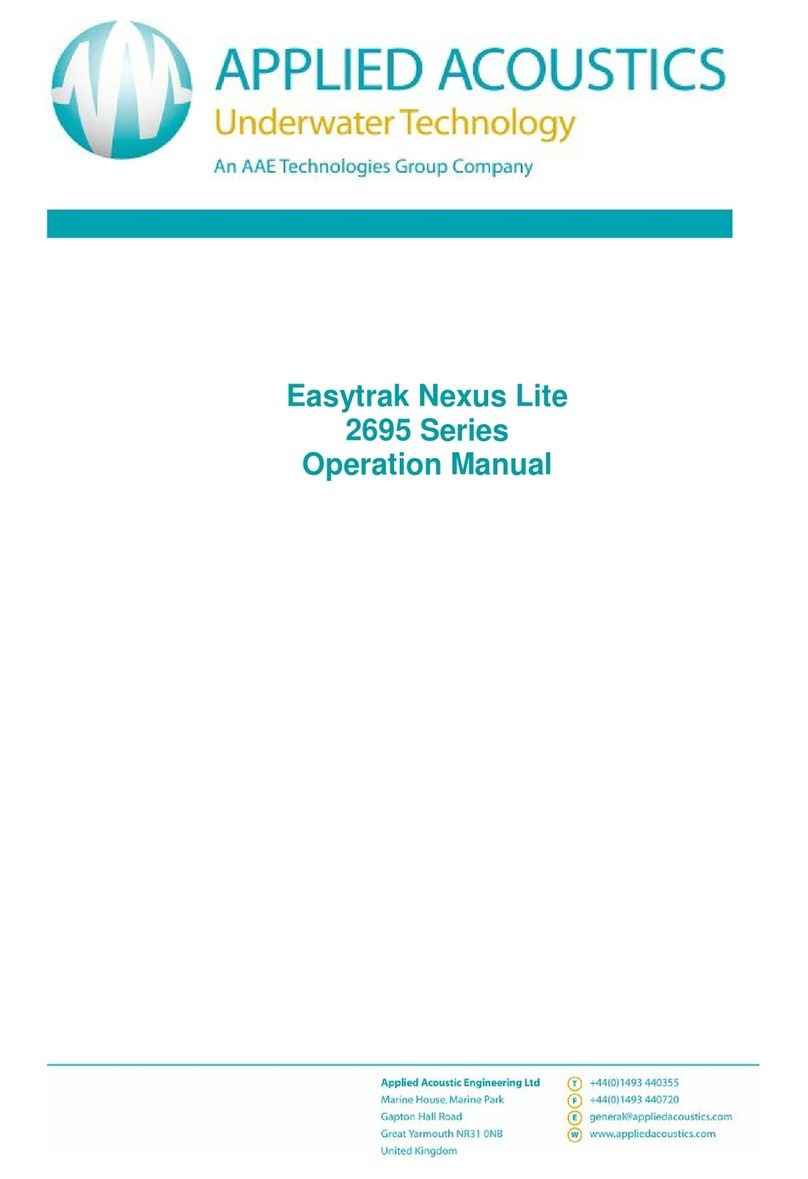
APPLIED ACOUSTICS SYSTEMS
APPLIED ACOUSTICS SYSTEMS Easytrak Nexus Lite 2695 Operation manual
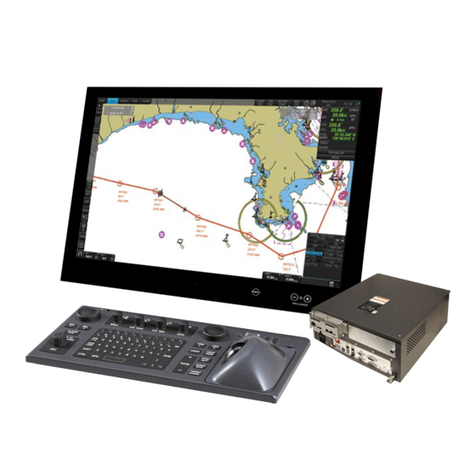
Furuno
Furuno FMD-3200-BB instruction manual
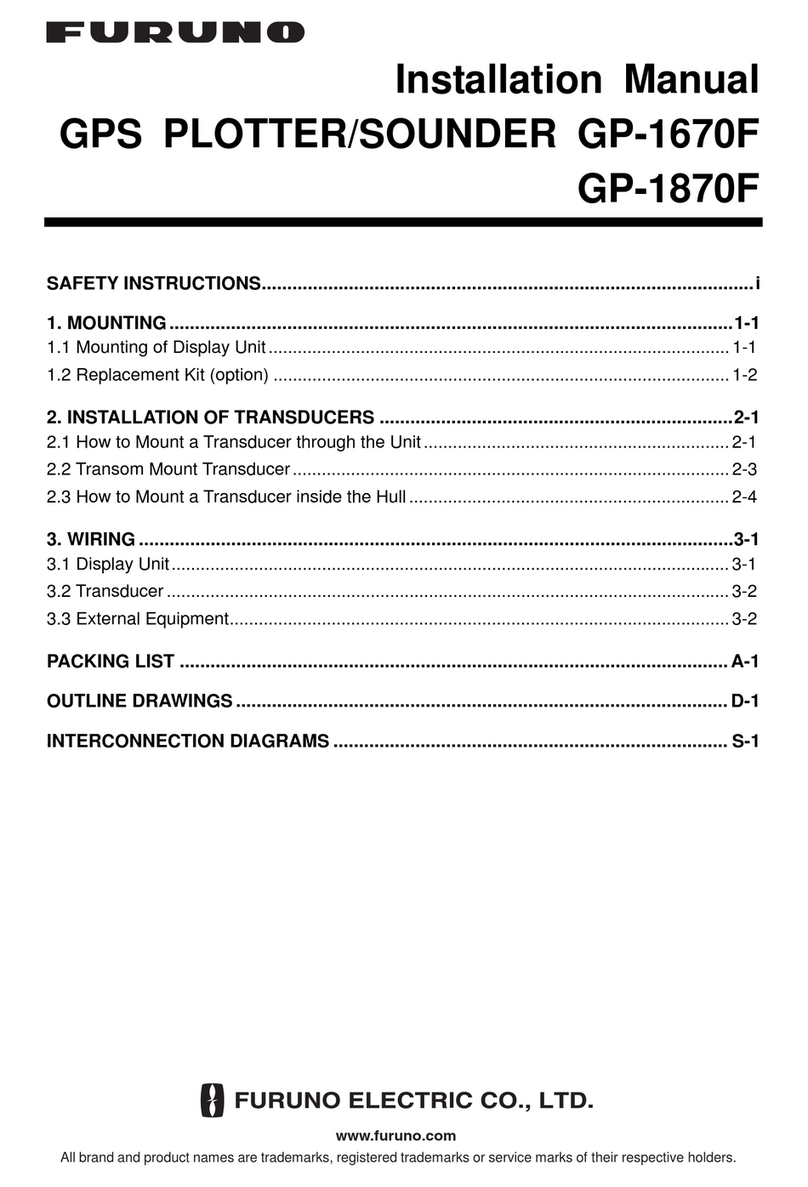
Furuno
Furuno GP-1670F installation manual
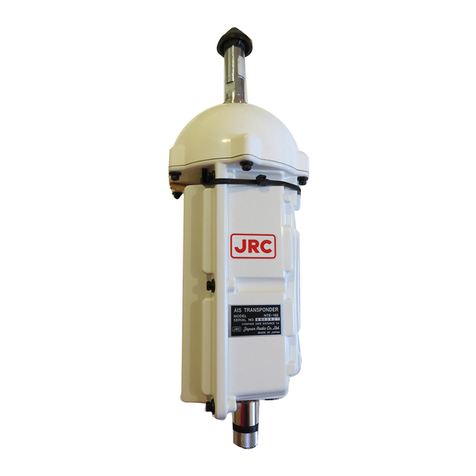
Japan Radio Co.
Japan Radio Co. JHS-182 Service manual
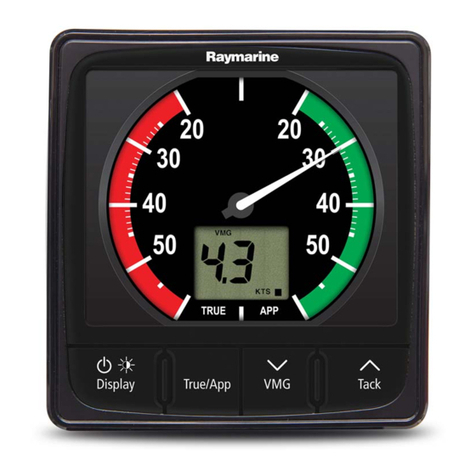
Raymarine
Raymarine i60 wind Installation & operation instructions
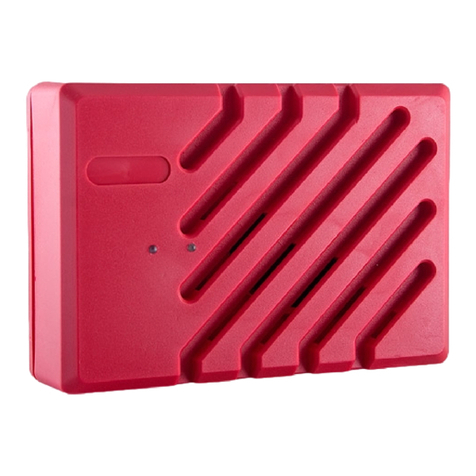
UniPOS
UniPOS FD 7204S instruction manual
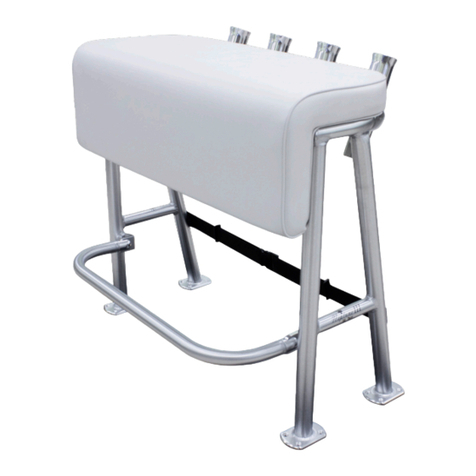
Taco Marine
Taco Marine Neptune III Installation instruction guide

Furuno
Furuno 1824C-BB installation manual
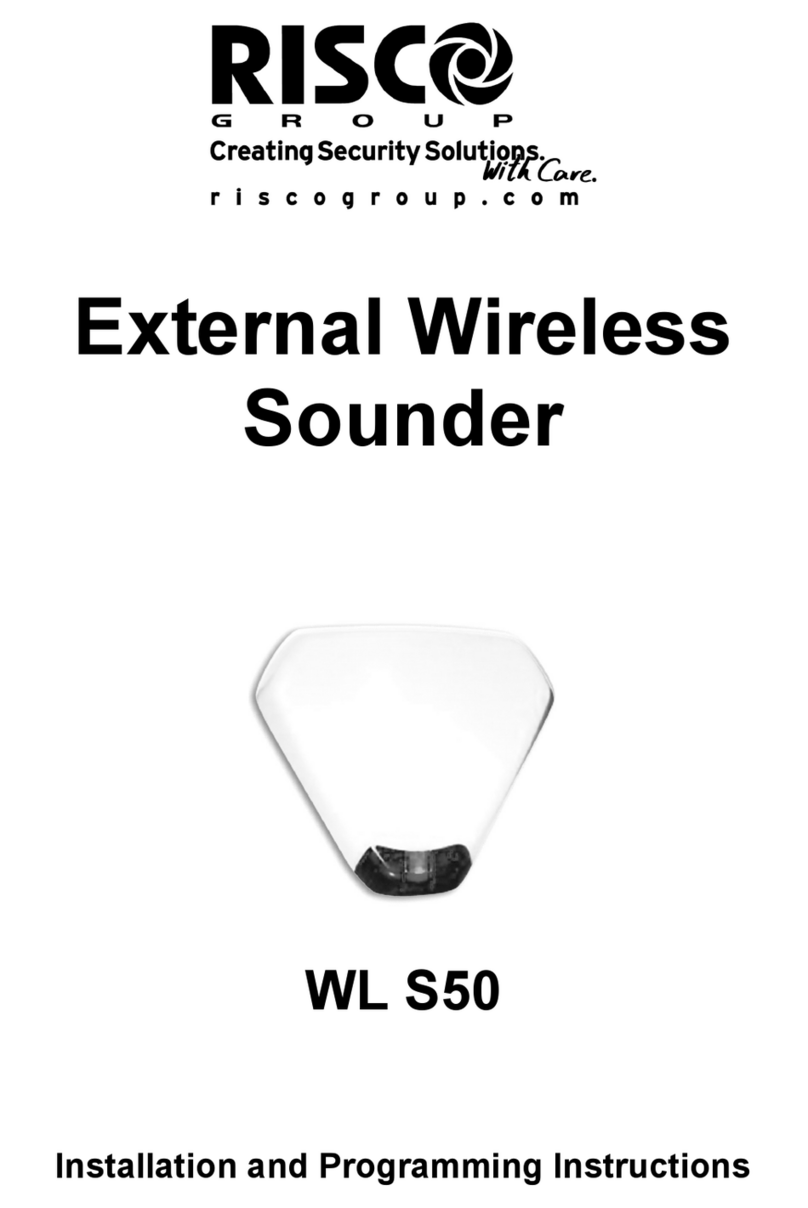
Risco
Risco WL S50 Installation and programming instructions
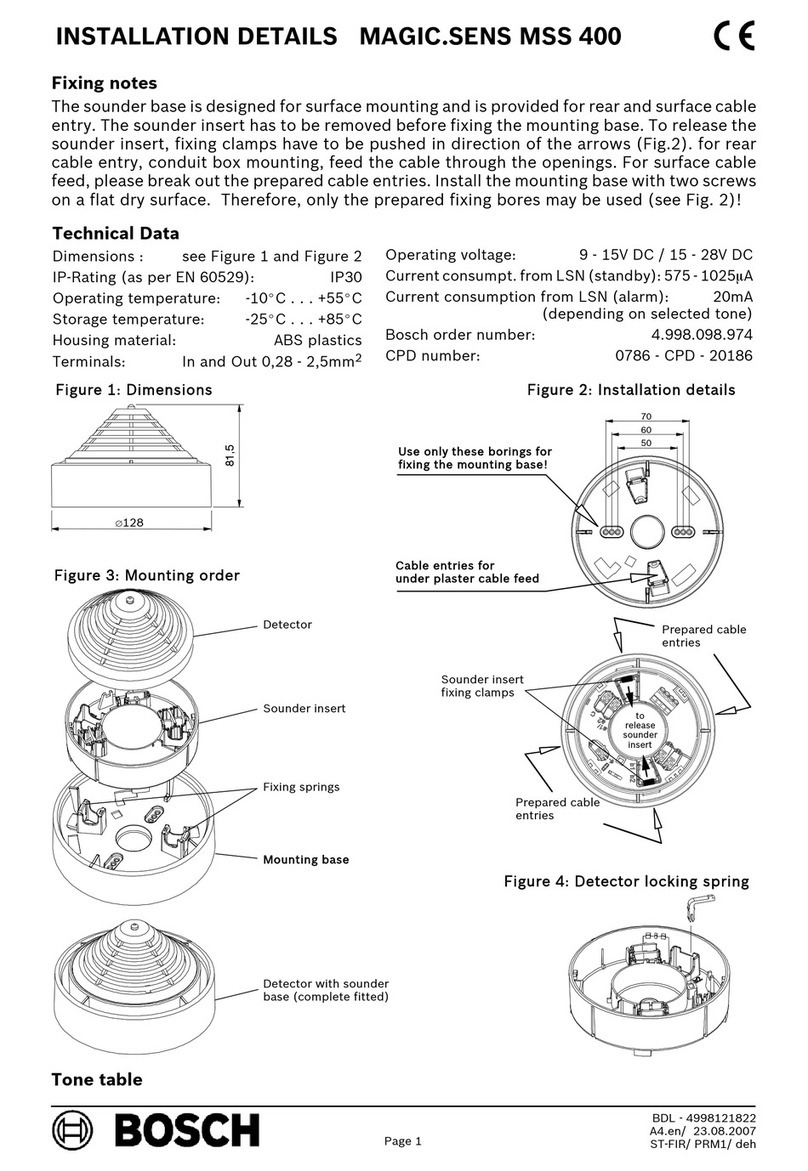
Bosch
Bosch MAGIC.SENS MSS 400 Installation details
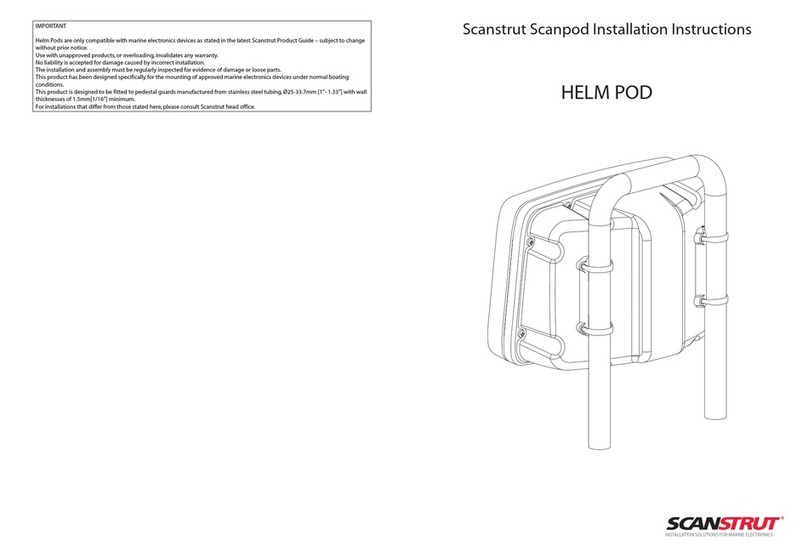
Scanstrut
Scanstrut SPH-8-W installation instructions
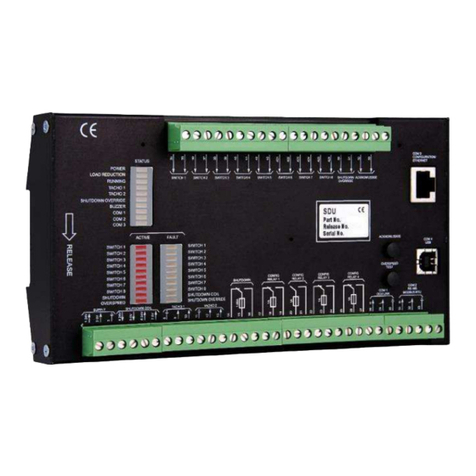
auto maskin
auto maskin 1006451 Quick installation guide
